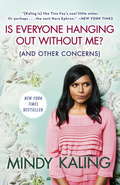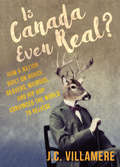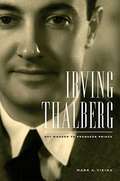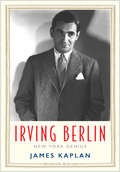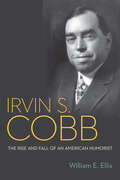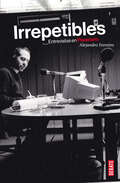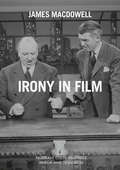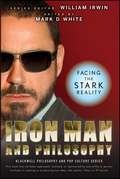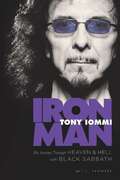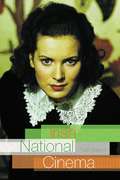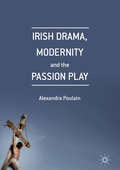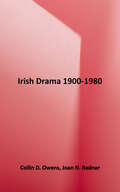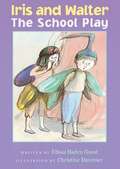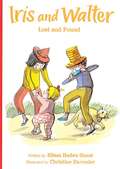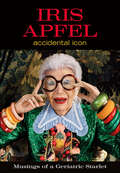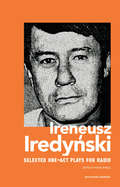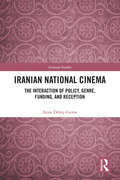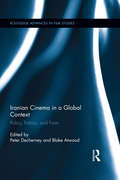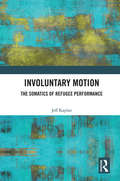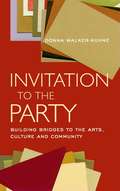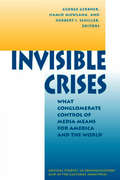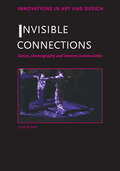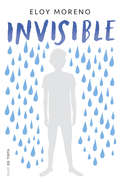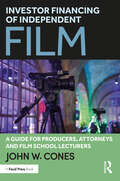- Table View
- List View
Is Everyone Hanging Out Without Me? (And Other Concerns): (and Other Concerns)
by Mindy KalingMindy Kaling has lived many lives: the obedient child of immigrant professionals, a timid chubster afraid of her own bike, a Ben Affleck-impersonating Off-Broadway performer and playwright, and, finally, a comedy writer and actress prone to starting fights with her friends and coworkers with the sentence "Can I just say one last thing about this, and then I swear I'll shut up about it?" Perhaps you want to know what Mindy thinks makes a great best friend (someone who will fill your prescription in the middle of the night), or what makes a great guy (one who is aware of all elderly people in any room at any time and acts accordingly), or what is the perfect amount of fame (so famous you can never get convicted of murder in a court of law), or how to maintain a trim figure (you will not find that information in these pages). If so, you've come to the right book, mostly! In Is Everyone Hanging Out Without Me?, Mindy invites readers on a tour of her life and her unscientific observations on romance, friendship, and Hollywood, with several conveniently placed stopping points for you to run errands and make phone calls. Mindy Kaling really is just a Girl Next Door--not so much literally anywhere in the continental United States, but definitely if you live in India or Sri Lanka.From the Hardcover edition.
Is Canada Even Real?: How a Nation Built on Hobos, Beavers, Weirdos, and Hip Hop Convinced the World to Beliebe
by J. C. VillamereThis quirky ode to a quirky land is a humorous nostalgia trip and a fun Canadian history lesson couched in a hipster quiz book. If you’ve ever wondered Why is the inuksuk more revered than Wheelchair Jimmy? Does the iconic beaver really represent us better than The Littlest Hobo? Is everyone going canoeing without me or is canoeing way less of a thing than it’s made out to be? then this book is for you. Is Canada even real? It’s a question that’s being asked more and more, thanks to our waterproof, see-through, supposedly maple-scented currency and our improbably hot prime minister’s assertion that Santa lives here. In the age of Google Maps and #factcheck, how could the existence of Canada be questioned? And yet how could a nation that’s the home of toboggans, Drake, and KD exist in the same realm as, say, Belgium or Niger? Is Canada Even Real? examines the cultural factors behind the twenty-first-century monolithic myth of Canada, a nation that is lovable and real — if only in your imagination.
Irving Thalberg: Boy Wonder to Producer Prince
by Mark A. VieiraBiography of Irving Thalberg of Brooklyn, who survived childhood illness to run Universal Pictures at age twenty; co-founded Metro-Goldwyn-Mayer at twenty-four; and made stars of Lon Chaney, Norma Shearer, Greta Garbo, Joan Crawford, Clark Gable, and Jean Harlow.
Irving Berlin: New York Genius (Jewish Lives)
by James KaplanFrom the prizewinning Jewish Lives series, a fast‑moving, musically astute portrait of arguably the greatest composer of American popular music Irving Berlin (1888–1989) has been called—by George Gershwin, among others—the greatest songwriter of the golden age of the American popular song. &“Berlin has no place in American music,&” legendary composer Jerome Kern wrote; &“he is American music.&” In a career that spanned an astonishing nine decades, Berlin wrote some fifteen hundred tunes, including &“Alexander&’s Ragtime Band,&” &“God Bless America,&” and &“White Christmas.&” From ragtime to the rock era, Berlin&’s work has endured in the very fiber of American national identity. Exploring the interplay of Berlin&’s life with the life of New York City, noted biographer James Kaplan offers a visceral narrative of Berlin as self‑made man and witty, wily, tough Jewish immigrant. This fast‑paced, musically opinionated biography uncovers Berlin&’s unique brilliance as a composer of music and lyrics. Masterfully written and psychologically penetrating, Kaplan&’s book underscores Berlin&’s continued relevance in American popular culture.About Jewish Lives: Jewish Lives is a prizewinning series of interpretative biography designed to explore the many facets of Jewish identity. Individual volumes illuminate the imprint of Jewish figures upon literature, religion, philosophy, politics, cultural and economic life, and the arts and sciences. Subjects are paired with authors to elicit lively, deeply informed books that explore the range and depth of the Jewish experience from antiquity to the present. In 2014, the Jewish Book Council named Jewish Lives the winner of its Jewish Book of the Year Award, the first series ever to receive this award.More praise for Jewish Lives: &“Excellent.&” – New York times &“Exemplary.&” – Wall St. Journal &“Distinguished.&” – New Yorker &“Superb.&” – The Guardian
Irvin S. Cobb: The Rise and Fall of an American Humorist
by William E. EllisThis biography of a little-remembered Southern humorist “delivers on its claim that Cobb’s life is emblematic of changes that registered on a larger scale” (Journal of Southern History).“Humor is merely tragedy standing on its head with its pants torn.” ?Irvin S. CobbBorn and raised in Paducah, Kentucky, humorist Irvin S. Cobb (1876–1944) rose from humble beginnings to become one of the early twentieth century’s most celebrated writers. As a staff reporter for the New York World and Saturday Evening Post, he became one of the highest-paid journalists in the United States. He also wrote short stories for noted magazines, published books, and penned scripts for the stage and screen.In Irvin S. Cobb: The Rise and Fall of a Southern Humorist, historian William E. Ellis examines the life of this significant writer. Though a consummate wordsmith and a talented observer of the comical in everyday life, Cobb was a product of the Reconstruction era and the Jim Crow South. As a party to the endemic racism of his time, he often bemoaned the North’s harsh treatment of the South and stereotyped African Americans in his writings. Marred by racist undertones, Cobb’s work has largely slipped into obscurity.Nevertheless, Ellis argues that Cobb’s life and works are worthy of more detailed study, citing his wide-ranging contributions to media culture and his coverage of some of the biggest stories of his day, including on-the-ground reporting during World War I. A valuable resource for students of journalism, American humor, and popular culture, this illuminating biography explores Cobb’s life and his influence on early twentieth-century letters.
Irrepetibles: Entrevistas en Planetario
by Alejandro FerreiroHubo una vez un programa de radio cuyo influjo fue irresistible. Un programa cuyo sonido viajaba y se propagaba por el aire hospedando a un jardín de oyentes que estaban unidos por vínculos secretos. Ese programa se llamó Planetario. Lo conducía Alejandro Ferreiro, que cada noche replicaba el atávico ritual de sentarse a escuchar lo que otros tenían para decir. Por sus micrófonos pasaron figuras clave de la cultura uruguaya. Algunos de ellos ya no están con nosotros. Este libro recupera sus ideas, su particular mirada, trasvasando la oralidad en palabra escrita. Pero Alejandro logra también comunicar el clima que se vivió en cada uno de esos encuentros, la atmósfera que rodeó aquellas conversaciones. Mario Levrero (Jorge Varlotta), Abel Carlevaro, Marosa di Giorgio, Alfredo Testoni, Lágrima Ríos y Gustavo PríncipePena pasan por estas páginas dejando su estela, y la experiencia de la lectura nos devuelve el color de aquellas noches de radio.Como dice el autor: “Irrepetibles los entrevistados, aquellos momentos, aquellas horas de radio. Irrepetibles, y eso es lo mejor”.
Irony in Film (Palgrave Close Readings in Film and Television)
by James MacdowellIrony in Film is the first book about ironic expression in this medium. We often feel the need to call films or aspects of them ironic; but what exactly does this mean? How do films create irony? Might certain features of the medium help or hinder its ironic potential? How can we know we are justified in dubbing any film or moment ironic? This book attempts to answer such questions, investigating in the process crucial and under-examined issues that irony raises for our understanding of narrative filmmaking.A much-debated subject in other disciplines, in film scholarship irony is habitually referred to but too seldom explored. Combining in-depth theorising with detailed close analysis, this pioneering study asks what ironic capacities films might possess, how film style may be used ironically, and what role intention should play in film interpretation. The proposed answers have significance for our understanding of not only ironic filmmaking, but the nature of expression in this medium.
Iron Man and Philosophy: Facing the Stark Reality
by Mark D. WhiteThe first look at the philosophy behind the Iron Man comics and movies, timed for the release of Iron Man 2 in March 2010. On the surface, Iron Man appears to be a straightforward superhero, another rich guy fighting crime with fancy gadgets. But beneath the shiny armor and flashy technology lies Tony Stark, brilliant inventor and eccentric playboy, struggling to balance his desires, addictions, and relationships with his duties as the Armored Avenger. Iron Man and Philosophy explores the many philosophical issues that emerge from the essential conflicts found in the decades of Iron Man stories in comics and movies. What kind of moral compass does Tony Stark have? Is Iron Man responsible for the death of Captain America after the Marvel Universe "Civil War"? Should people like Stark run the world? How does Tony's alcoholism impact his performance as Iron Man, and what does it say about moral character? Ultimately, what can Iron Man teach us about the role of technology in society? As absorbing as Iron Man comic books and movies, Iron Man and Philosophy: Gives you a new perspective on Iron Man characters, story lines, and themes Shows what philosophical heavy hitters such as Aristotle, Locke, and Heidegger can teach us about Tony Stark/Iron Man Considers issues such as addiction, personal responsibility, the use of technology, and the role of government Whether you've been reading the comic books for years or have gotten into Iron Man through the movies, Iron Man and Philosophy is a must-have companion for every fan.
Iron Man
by Tony IommiThe memoir of one of the great musicians of our time, Tony Iommi?Grammy-winning revolutionary guitarist, cofounding member of Black Sabbath, and architect of heavy metal
Irish National Cinema (National Cinemas)
by Ruth BartonFrom the international successes of Neil Jordan and Jim Sheridan, to the smaller productions of the new generation of Irish filmmakers, this book explores questions of nationalism, gender identities, the representation of the Troubles and of Irish history as well as cinema's response to the so-called Celtic Tiger and its aftermath. Irish National Cinema argues that in order to understand the unique position of filmmaking in Ireland and the inheritance on which contemporary filmmakers draw, definitions of the Irish culture and identity must take into account the so-called Irish diaspora and engage with its cinema. An invaluable resource for students of world cinema.
Irish Drama, Modernity and the Passion Play
by Alexandra PoulainThis book discusses Irish Passion plays (plays that rewrite or parody the story of the Passion of Christ) in modern Irish drama from the Irish Literary Revival to the present day. It offers innovative readings of such canonical plays as J. M. Synge’s The Playboy of the Western World, W. B. Yeats’s Calvary, Brendan Behan’s The Hostage, Samuel Beckett’s Endgame, Brian Friel’s Faith Healer and Tom Murphy’s Bailegangaire, as well as of less well-known plays by Padraic Pearse, Lady Gregory, G. B. Shaw, Seán O’Casey, Denis Johnston, Samuel Beckett and David Lloyd. Challenging revisionist readings of the rhetoric of “blood sacrifice” and martyrdom in the Irish Republican tradition, it argues that the Passion play is a powerful political genre which centres on the staged death of the (usually male) protagonist, and makes visible the usually invisible violence perpetrated both by colonial power and by the postcolonial state in the name of modernity.
Irish Drama, 1900-1980
by Coilin D. Owens Joan N. RadnerThis superb collection of eighteen plays has long been needed. It provides a sound and solid introduction to the rich field of modern Irish drama and should be as delightful to the private reader as it will be useful for university classes. The Journal of Irish Literature Contents: Spreading the News and The Gaol Gate - Lady Gregory; On Baile's Strand and the Only Jealousy of Emer -W.B. Yeats; The Land -Padraic Colum; The Playboy of the Western World -J.M. Synge; Maurice Harr -T. C. Murray; The Magic Glasses -George Fitzmaurice; Juno and the Paycock -Sean O'Casey; The Big House -Lennox Robinson; The Old Lady Says "No!" -Denis Johnston; As the Crow Flies -Austin Clarke; The Paddy Pedlar -M. J. Malloy; The Vision of Mac Conglinne -Padraic Fallon; The Quare Fellow -Brendan Behan; All that Fall -Samuel Becket; Da -Hugh Leonard; Translations -Brian Friel
Iris and Walter: The School Play
by Elissa Haden Guest Christine DavenierIris and Walter can't wait for opening day of their first school play. Walter helps Iris make her costume. Iris helps Walter practice his lines. But when Iris wakes up sick on the morning of their debut, it looks like the curtain is going up on a big disappointment. . . .
Iris and Walter: Lost and Found
by Elissa Haden Guest Christine DavenierWalter loves his grandmother's harmonica. But when he lets Iris borrow it the night before his grandmother comes to visit, something awful happens--it disappears! How will Iris break the news to Walter?
Iris Apfel: Accidental Icon
by Iris ApfelFrom the fashion icon, “a joyous, colorful collection of photographs; drawings; reflections; and personal mottos on marriage, business, fame and style” (Boca Raton Observer).The late great Iris Apfel was a woman who transcended time and trends—one of the most original and dynamic personalities in the worlds of fashion, textiles, and interior design. Written a few years before her passing at age 102, this is a lavishly illustrated memoir in which she shares her musings, anecdotes, and incomparable wisdom.As the cofounder with her husband of Old World Weavers, an international textile manufacturing company that specialized in reproducing antique fabrics, she served a prestigious clientele including Greta Garbo, Estee Lauder, Montgomery Clift, and Joan Rivers. She also acted as a restoration consultant and replicated fabric for the White House over nine presidential administrations. Iris’s worldwide travels and devotion to flea markets inspired her work and fueled her passion for collecting fashion and accessories. In 2005, she was the first living person who was not a designer to have her clothing and accessories exhibited at the Costume Institute at the Metropolitan Museum of Art, a blockbuster show that catapulted her to fame and a career as a model, muse, and collaborator for renowned brands from Citroen to Tag Heuer. In 2015, acclaimed director Albert Maysles released Iris, his Emmy Award-nominated documentary, to a global audience.This celebratory volume captures her unique joie de vivre and features 180 full-color and black-and-white photos and illustrations—presented in the same improvisational, multifaceted style that made Iris a much-loved legend. “It’s hard to resist this self-proclaimed ‘geriatric starlet.’ With her owlish glasses, loud prints and necklaces upon necklaces, even in her 90s, Apfel is a fashion icon who combines a memoir with photos of the vibrant contents of her closets.” —The New York Times Book Review
Ireneusz Iredynski: Selected One-Act Plays for Radio
by Kevin WindleThis vibrant anthology of radio plays features works by one of Poland's 'angry young men' playwrights. Ireneusz Iredynski made his début in literature as a Polish 'angry young man' in the late 1950s. He moved with great versatility from verse to stage plays, film-scripts and plays for radio. While some of the plays in this collection seem to present a bleak view of life, they show a gentler side of Iredynski. Here it is people's dreams rather than their worst nightmares that are explored. In these plays, situations are kept simple and the theatrical technique is spare and economical, but yet, the playwright demonstrates an unfailing theatrical flair and shows himself a master of dramatic tension and the final unexpected twist.
Iranian National Cinema: The Interaction of Policy, Genre, Funding and Reception (Iranian Studies)
by Anne Demy-GeroeThis book examines transformations in the production and domestic and international reception of Iranian cinema between 2000 and 2013 through the intersection of the political markers – the presidential terms of Reformist president Mohammad Khatami and his successor, the conservative Mahmoud Ahmadinejad – and filmic markers, particularly Jafar Panahi’s The Circle (2000) and Asghar Farhadi’s About Elly (2009). Through extensive field and media research, the book considers the interaction of a range of factors including government policy, Iranian national cinema genres and categories, intended audience, funding source, and domestic and international reception, to demonstrate the interplay between filmmakers and the government over these two successive presidencies. While the impact of politics on Iranian filmmaking has been widely examined, this work argues for a more nuanced understanding of politics in and of the Iranian cinema than has generally been previously acknowledged. Drawing on both personal experience as a juror at the Fajr International Film festival and interviews with significant filmmakers, producers, actors and other industry insiders, including senior bureaucrats and politicians, the volume is a key resource for anyone interested in politics and Iranian cinema.
Iranian Cinema in a Global Context: Policy, Politics, and Form (Routledge Advances in Film Studies)
by Peter Decherney Blake AtwoodIranian films have been the subject of much critical and scholarly attention over the past several decades, and Iranian filmmakers are mainstays of international film festivals. Yet most of the attention has been focused on a small segment of Iranian film production: auteurist art cinema. Iranian Cinema in a Global Context, on the other hand, takes account of the wide range of Iranian cinema, from popular youth films to low budget underground films. The volume also reassesses the global circulation of Iranian art cinema, looking at its reception at international festivals, in university curricula, and at the Academy Awards. A final theme of the volume explores the intersection between politics and film, with essays on post-Khatami reform influences, representations of ineffective drug policies, and the representation of Jewish characters in Iranian film. Taken together, the essays in this volume present a new definition of the field of Iranian film studies, one that engages global media flows, transmedia interaction, and a heterogeneous Iranian national cinema.
Involuntary Motion: The Somatics of Refugee Performance
by Jeff KaplanInvoluntary Motion contributes to the study of refugee flight by using movement as a lens to explore problems in refugee performance and understand the experience of bodies in motion. Drawing from Somatics, Movement Analysis, and dance praxis, the chapters explore forces that set bodies in motion; the spaces in which forced movement occurs; the movement of refugee identity arcs; the monstrosity of refugee performance; and the relationship between writing and body culture. How does forced movement impact identity? What are the philosophical implications of robbing agency over motion? What performances does involuntary motion necessitate? These questions are important as the world confronts the threat of a return of the horrors of the Twentieth Century. Bringing together debates in Migration Studies and Movement Studies, the book argues that refugees are akin to dancers performing on disappearing stages, not of their choosing. It will be of great interest to students and scholars of performance, dance and politics.
Invitation to the Party
by Donna Walker-Kuhne George C. WolfeAcknowledged as the nation's foremost expert on audience development involving America's growing multicultural population by the Arts and Business Council, Donna Walker-Kuhne has now written the first book describing her strategies and methods to engage diverse communities as participants for arts and culture. By offering strategic collaborations and efforts to develop and sustain nontraditional audiences, this book will directly impact the stability and future of America's cultural and artistic landscape. Donna Walker-Kuhne has spent the last 20 years developing and refining these principles with such success as both the Broadway and national touring productions of Bring in 'Da Noise, Bring in 'Da Funk, as well as transforming the audiences at one of the U.S.'s most important and visible arts institutions, New York's Public Theater. This book is a practical and inspirational guide on ways to invite, engage and partner with culturally diverse communities, and how to enfranchise those communities into the fabric of arts and culture in the United States.Donna Walker-Kuhne is the president of Walker International Communications Group. From 1993 to 2002, she served as the marketing director for the Public Theater in New York, where she originated a range of audience-development activities for children, students and adults throughout New York City. Ms. Walker-Kuhne is an Adjunct Professor in marketing the arts at Fordham University, Brooklyn College and New York University. She was formerly marketing director for Dance Theatre of Harlem. Ms. Walker-Kuhne has given numerous workshops and presentations for arts groups throughout the U.S., including the Arts and Business Council, League of American Theaters and Producers, the Department of Cultural Affairs, and the National Endowment for Arts to name a few. She has been nominated for the Ford Foundation's 2001 Leadership for a Changing World Fellowship.
Invisible Storytellers: Voice-Over Narration in American Fiction Film
by Sarah KozloffSarah Kozloff examines and analyzes voice-over narration through examples from films and refutes the assumptions that words should only play a minimal role in film, that "showing" is superior to "telling," or that the technique is inescapably authoritarian.
Invisible Crises: What Conglomerate Control of Media Means for America and the World (Critical Studies in Communication and in the Cultural Industries)
by George GerbnerHidden from public sight and mind today are invisible crises that threaten our democracy and existence more than the crises we know about—or think we know about. These invisible crises include the promotion of practices that drug, hurt, poison, and kill thousands every day; cults of violence that desensitize, terrorize, and brutalize; the growing siege mentality of our cities; widening resource gaps and the most glaring inequalities in the industrial world; the costly neglect of vital institutions such as public education and the arts; and media-assisted make-believe image politics corrupting the electoral process.Deprived of sustained attention but bombarded by eruptions of surface consequences (often presented as unique events stripped of historical context), people ar bewildered, fearful, angry, and cynical.The contributors to this volume—exploring such unattended crises, analyzing why they are hidden, and focusing on the increasing concentration of culture-power that keeps them from view—maintain that a profound general crisis of social vision, public communication, and representative government underlies all of the invisible crises.
Invisible Connections: Dance, Choreography and Internet Communities (Innovations In Art And Design Ser.)
by Sita PopatThe first and only book to focus on dance on the Internet, Sita Popat‘s fascinating Invisible Connections examines how Internet and communication technologies offer dance and theatre new platforms for creating and performing work, and how opportunities for remote interaction and collaboration are available on a scale never before imaginable.Drawing
Invisible
by Eloy MorenoEmotiva, conmovedora, diferente... Invisible narra, a través de los ojos de un niño, una historia que podría ser la de cualquiera de nosotros. ¿Quién no ha deseado alguna vez ser invisible? ¿Quién no ha deseado alguna vez dejar de serlo? El problema es que nunca he llegado a controlar bien ese poder: A veces, cuando más ganas tenía de ser invisible, era cuando más gente me veía, y en cambio, cuando deseaba que todos me vieran, era cuando a mi cuerpo le daba por desaparecer.
Investor Financing of Independent Film: A Guide for Producers, Attorneys and Film School Lecturers
by John W. ConesThis book explains how to comply with the federal and states securities regulations when seeking to raise money from private investors for the development, production and/or distribution of a feature or documentary film. Drawing from the experience and expertise of a securities and entertainment attorney who has worked with independent filmmakers for 30 plus years, this resource explores securities law compliance in order to help readers comply with the law and avoid criminal and civil liability, while successfully raising investor funds for their film projects. Readers will gain an understanding of why the securities laws apply to most investor financing transactions, what choices need to be made by the filmmaker, what information needs to be disclosed to prospective investors, how to comply with the SEC’s policy regarding financial projections, what is the appropriate investment vehicle for various forms of investor financing, what limitations are imposed on the use of finders and how to handle the required federal and state notice filings. It is an essential resource for any film student taking a film finance course (or a production course with a film finance component), as well as any independent film producers, entertainment/securities attorneys and film school instructors, who want to be informed about the legal and practical aspects of investor financing of independent films.
